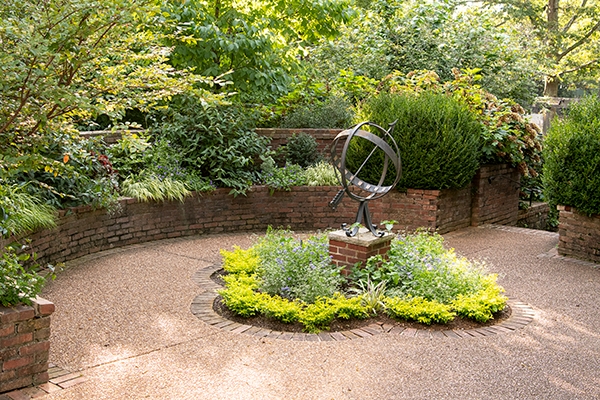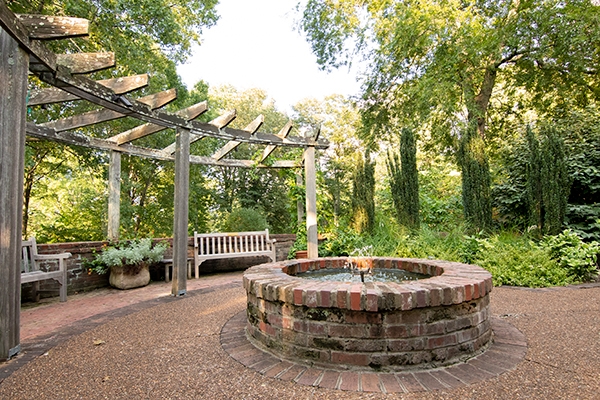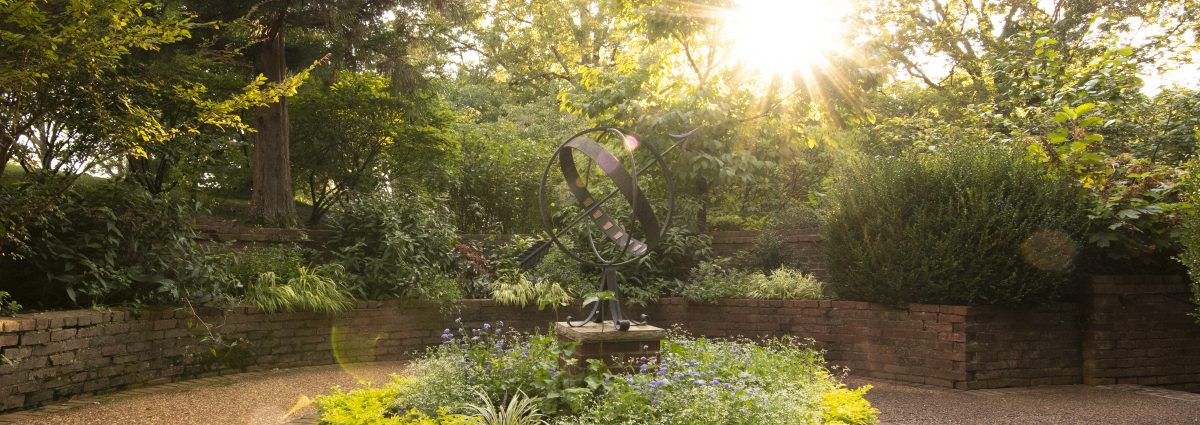Burr Terrace Garden
In celebration of Cheekwood’s 60th anniversary as a public institution, we’re highlighting one of our 12 distinct gardens each month to showcase our wide variety of garden offerings. With 55 acres of rolling hills and 12 intricate, unique gardens, there’s something for everyone to experience and love at Cheekwood.
In October 1971, it was formally announced that a new garden would be added to Cheekwood on the elevated terrain, just above the Howe Garden. Precisely one year later, on Sunday, October 15, 1972, the public celebrated the opening of the Elizabeth Burr Memorial Garden (as it was known at the time). On this day, the garden’s boldly colored chrysanthemums were in full bloom and bordered by heirloom roses planned and executed by the Nashville Rose Society and the Junior Department of the Woman’s Club of Nashville. In the few years following, a walkway was installed to provide ease of access between Cheekwood’s newest garden and the Howe Garden, Today, the landscape surrounding the walkway has matured with winter-blooming witch hazel, spring-flowering dogwood, and wine-colored crepe myrtles.
Elizabeth Burr was an enthusiastic gardener and an active member of the Belmont Garden Club, whose own garden was a source of great enjoyment to friends and family. When her daughter, Ruth Puryear expressed ideas for her mother’s memorial garden to W. James Coile, a local and very notable landscape architect, she emphasized two main concepts for a design: to stimulate the senses and to provide accessibility all.


Coile put these ideas to work to develop a concept based on Orto Botanico di Padova (The Botanical Garden of Padua, Italy). Built in 1545, the garden in Padua is the oldest surviving botanical garden. A round plot surrounded by water; it was designed to represent the world.
The Burr Terrace Garden sits within the Cheekwood landscape like a jewel box, displaying the truest sentiment of love from daughter to mother. Guests can see the similarities between the Burr Terrace Garden and the Orto Botanico di Padova in the rounded, hardscaped garden outlines, the organic shapes of the beds, the central water feature, and the use of focal points to draw the eye further into the landscape.
From an interpretation and usage standpoint, the likeness to its Italian garden counterpart can be observed in the first and second circular plots. The Burr Terrace Garden represents phases in time as they relate to historical gardening themes. Within the entrance garden, visitors will find present-day horticulture trends, often corresponding to the seasonal display design found in the Bradford Robertson Color Garden.
A small, traditional knot garden was designed into the second level of the Burr Terrace as a nod to the intricate designs commonly exhibited in gardens of the Italian Renaissance Era (1330-1550). Knot gardens were intended to be viewed from above and James Coile’s placement of the one designed into the Burr Terrace Garden is perfect in that effect.
The petite knot, as well as the surrounding beds, originally contained culinary, medicinal, and other household herbs. For a time, this portion of the garden was important in serving the visually impaired community and was maintained in conjunction with the Herb Society of Nashville. Both the principal and superintendent of the Tennessee School of the Blind were consulted about the design. They encouraged Coile to feature plants to stimulate multiple senses into the design. In addition to using aromatic and textural plant material, raised beds, water, and braille labels were also utilized to assist the visually impaired.


Lastly, another few steps down from the second tier leads to an intimate space, planted with elegant oak-leaf hydrangeas, big-leaf hostas, textural plum yew, and Italianesque columnar boxwoods. This subdued, shaded area, complemented by the sound of the running fountain, provides a setting for stillness and relaxation. The sculpture, Figure on a Box, by Olen Bryant of Clarksville, Tennessee, adds a serene presence to this final tier.
With an arbor framed in the summer months by fringed passionflower and languid black-eyed Susan vines, the third and final section of the installation serves as a viewing platform for the Howe Garden. This viewshed is historically significant as the installation for the Burr Terrace Garden began only two years after the opening of the Howe. In a way, they are sister gardens.
More recently, this overlook provides a view into the nearby Bracken Foundation Children’s Garden as well. The connection isn’t only visual, it also tells a story, tying Cheekwood’s oldest garden installations with its newest.
